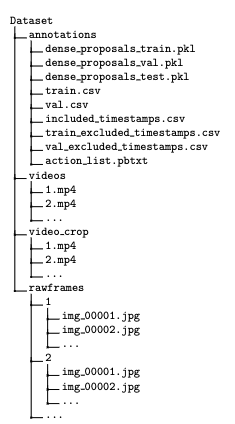lazy var persistentStoreCoordinator: NSPersistentStoreCoordinator = {
// The persistent store coordinator for the application. This implementation creates and returns a coordinator,having added the store for the application to it. This property is optional since there are legitimate error conditions that Could cause the creation of the store to fail.
// Create the coordinator and store
let coordinator = NSPersistentStoreCoordinator(managedobjectModel: self.managedobjectModel)
let url = self.applicationDocumentsDirectory.URLByAppendingPathComponent("SingleViewCoreData.sqlite")
var failureReason = "There was an error creating or loading the application's saved data."
let dict: [NSObject : AnyObject] = [
NSPersistentStoreFileProtectionKey : NSFileProtectionComplete
]
do {
try coordinator.addPersistentStoreWithType(NSsqliteStoreType,configuration: nil,URL: url,options: dict)
} catch {
// Report any error we got.
var dict = [String: AnyObject]()
dict[NSLocalizedDescriptionKey] = "Failed to initialize the application's saved data"
dict[NSLocalizedFailurereasonerrorKey] = failureReason
dict[NSUnderlyingErrorKey] = error as NSError
let wrappedError = NSError(domain: "YOUR_ERROR_DOMAIN",code: 9999,userInfo: dict)
// Replace this with code to handle the error appropriately.
// abort() causes the application to generate a crash log and terminate. You should not use this function in a shipping application,although it may be useful during development.
NSLog("Unresolved error \(wrappedError),\(wrappedError.userInfo)")
abort()
}
do {
let url = self.applicationDocumentsDirectory.URLByAppendingPathComponent("SingleViewCoreData.sqlite")
try NSFileManager.defaultManager().setAttributes([NSFileProtectionKey : NSFileProtectionComplete],ofItemAtPath: url.path!)
} catch {
}
do {
let url = self.applicationDocumentsDirectory.URLByAppendingPathComponent("SingleViewCoreData.sqlite-wal")
try NSFileManager.defaultManager().setAttributes([NSFileProtectionKey : NSFileProtectionComplete],ofItemAtPath: url.path!)
// try print(NSFileManager.defaultManager().attributesOfFileSystemForPath(String(url)))
} catch {
}
do {
let url = self.applicationDocumentsDirectory.URLByAppendingPathComponent("SingleViewCoreData.sqlite-shm")
try NSFileManager.defaultManager().setAttributes([NSFileProtectionKey : NSFileProtectionComplete],ofItemAtPath: url.path!)
// try print(NSFileManager.defaultManager().attributesOfFileSystemForPath(String(url)))
} catch {
}
return coordinator
}()
我还在“功能”中为我的目标启用了数据保护.我已从Apple Developer门户重新生成配置文件,并将其与Enabled Data Protection一起使用.
我还使用以下代码来检查.sqlite,.sqlite-wal和.sqlite-shm文件的文件属性.正确为所有3个NSFileProtectionKey设置了它.
func checkProtectionForLocalDb(atDir : String){
let fileManager = NSFileManager.defaultManager()
let enumerator: NSDirectoryEnumerator = fileManager.enumeratorAtPath(atDir)!
for path in enumerator {
let attr : NSDictionary = enumerator.fileAttributes!
print(attr)
}
}
我还尝试禁用日记模式以防止创建-wal和-shm文件.但我仍然可以阅读.sqlite文件.即使属性读取NSFileProtectionComplete.
如Apple文档Apple Docs“使用磁盘加密保护数据”中所述,我尝试检查变量protectedDataAvailable的值是否发生了变化,如下面的代码所示
public func applicationDidEnterBackground(application: UIApplication) {
// Use this method to release shared resources,save user data,invalidate timers,and store enough application state @R_40_4045@ion to restore your application to its current state in case it is terminated later.
// If your application supports background execution,this method is called instead of applicationWillTerminate: when the user quits.
NSThread.sleepForTimeInterval(10)
sleep(10)
let dataAvailable : Bool = UIApplication.sharedApplication().protectedDataAvailable
print("Protected Data Available : " + String(dataAvailable))
}
如果我在没有延迟的情况下检查该值,则将其设置为true,但在添加延迟后将其设置为false.然而,这是一种令人鼓舞的事情,当我下载容器以显示内容时,它仍然具有.sqlite文件,在sqlitebrowser中打开时仍显示内容.
使用Xcode 7.3.1 ..
启用文件保护
>使用应用目标上的功能选项卡启用文件保护
>如果您不想使用默认的NSFileProtectionComplete,请在应用程序ID下的开发人员门户中更改此设置
>确保XCode具有此创建的新配置文件.
>为了保护您的应用创建的文件,就是这样.
>要保护Core Data,您需要将NSPersistentStoreFileProtectionKey:NSFileProtectionComplete选项添加到持久性存储中.
例:
var options: [NSObject : AnyObject] = [NSMigratePersistentStoresAutomaticallyOption: true,NSPersistentStoreFileProtectionKey: NSFileProtectionComplete,NSInferMappingModelAutomaticallyOption: true]
do {
try coordinator!.addPersistentStoreWithType(NSsqliteStoreType,options: options)
测试文件保护
我无法使用连接到计算机的非越狱设备对此进行测试.每次以这种方式访问设备的尝试都要求我“信任”计算机,我相信可信任的计算机始终能够读取手机的数据(“可信计算机可以与您的iOS设备同步,创建备份,以及访问设备的照片,视频,联系人和其他内容“ – https://support.apple.com/en-us/HT202778).我认为SO引用此技术的其他答案对于更新版本的iOS不再有效.实际上,我总是能够使用XCode下载容器并使用iPhone Explorer查看应用程序的数据.那么如何测试……
1 – 通过从命令行在.app文件上运行以下命令,创建存档并确保其具有正确的权利:
codesign -d --entitlements :- <path_to_app_binary>
您应该看到代表您的数据保护级别的键/值对.在这个例子中,NSFileProtectionComplete:
<key>com.apple.developer.default-data-protection</key> <string>NSFileProtectionComplete</string>
另外,我使用以下两种技术来确保数据保护确实有效.它们都需要更改代码.
2 – 添加一些代码以验证是否在文件和/或核心数据存储上设置了正确的NSFileProtectionKey:
NSFileManager.defaultManager().attributesOfItemAtPath(dbPath.path!)
["NSFileCreationDate": 2016-10-14 02:06:39 +0000,"NSFileGroupOwnerAccountName": mobile,"NSFileType": NSFileTypeRegular,"NSFileSystemNumber": 16777218,"NSFileOwnerAccountName": mobile,"NSFileReferenceCount": 1,"NSFileModificationDate": 2016-10-14 02:06:39 +0000,"NSFileExtensionHidden": 0,"NSFileSize": 81920,"NSFileGroupOwnerAccountID": 501,"NSFileOwnerAccountID": 501,"NSFilePosixPermissions": 420,"NSFileProtectionKey": NSFileProtectionComplete,"NSFileSystemFileNumber": 270902]
注意“NSFileProtectionKey”:NSFileProtectionComplete对.
@IBAction func settingButtonTouch(sender: AnyObject) {
updateTimer = NSTimer.scheduledTimerWithTimeInterval(0.5,target: self,selector: #selector(TabbedOverviewViewController.runTest),userInfo: nil,repeats: true)
registerBackgroundTask()
}
var backgroundTask: uibackgroundtaskIdentifier = uibackgroundtaskInvalid
var updateTimer: NSTimer?
func registerBackgroundTask() {
backgroundTask = UIApplication.sharedApplication().beginBackgroundTaskWithExpirationHandler {
[uNowned self] in
self.endBackgroundTask()
}
assert(backgroundTask != uibackgroundtaskInvalid)
}
func endBackgroundTask() {
NSLog("Background task ended.")
UIApplication.sharedApplication().endBackgroundTask(backgroundTask)
backgroundTask = uibackgroundtaskInvalid
}
func runtest() {
switch UIApplication.sharedApplication().applicationState {
case .Active:
NSLog("App is active.")
checkFiles()
case .Background:
NSLog("App is backgrounded.")
checkFiles()
case .Inactive:
break
}
}
func checkFiles() {
//attempt to access a protected resource,i.e. a core data store or file
}
当您点击按钮时,此代码每隔0.5秒开始执行checkFiles方法.这应该在应用程序的前台或后台无限期运行 – 直到您锁定手机.此时它应该在大约10秒后可靠地失败 – 完全如NSFileProtectionComplete的描述中所述.






